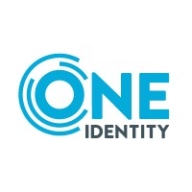

IBM Security QRadar and One Identity Safeguard compete in the security solutions segment. QRadar appears to have an upper hand with its comprehensive feature set aimed at diverse environments and advanced analytical capabilities.
Features: IBM Security QRadar includes strong log management, SIEM capabilities, and scalability. It analyzes complex logs and offers built-in rules, customized reports, and third-party solution integrations. One Identity Safeguard focuses on managing privileged access, secure remote access, session auditing, and recording while maintaining transparency and ease of use.
Room for Improvement: IBM Security QRadar is often criticized for its user interface and third-party integration, as well as the need for better visualization options and more comprehensive technical support. One Identity Safeguard requires better integration with cloud services, improved session management, and enhanced documentation to simplify deployment options.
Ease of Deployment and Customer Service: Both QRadar and Safeguard support various deployment models, including on-premises, public, hybrid, and private clouds. QRadar's broad regional support is noted, though technical support quality varies. Safeguard users often request faster technical support and simpler integration processes.
Pricing and ROI: QRadar's pricing is considered high, especially for small enterprises, and its EPS-based licensing can be expensive. However, users find value in its features. One Identity Safeguard is similarly pricey as it scales, though its licensing structures are transparent. Both solutions are seen as delivering positive ROI by enhancing security and streamlining access management, despite their premium costs.
With SOAR, the workflow takes one minute or less to complete the analysis.
Investing this amount was very much worth it for my organization.
Any PAM solution, when I deploy it well and customers use it, leads to a return on investment.
They assist with advanced issues, such as hardware or other problems, that are not part of standard operations.
Support needs to understand the issue first, then escalate it to the engineering team.
The support is really good; for instance, if a critical ticket is submitted, you will get paged right away as it gets logged, and their analyst will look into it, letting you know as soon as possible so you can work on it.
I sometimes need escalations to reach expertise.
Sometimes, I get a very helpful response and they address issues on a call.
When I have day-to-day incidents and problems, the response is good enough in terms of time and quality.
For EPS license, if you increase or exceed the EPS license, you cannot receive events.
The scalability of One Identity Safeguard is perfect, scoring ten out of ten.
We have a cluster of SPPs and a cluster of SPSs, and we can add a node to that cluster without much fuss.
I would rate it a nine out of ten for scalability.
I think QRadar is stable and currently satisfies my needs.
The product has been stable so far.
I would rate it a nine out of ten for stability.
In terms of stability, I rate One Identity Safeguard nine to ten out of ten.
I encounter problems primarily with the failover procedure.
We receive logs from different types of devices and need a way to correlate them effectively.
If AI-related support can suggest rules and integrate with existing security devices like MD, IPS, this SIM can create more relevant rules.
IBM Security QRadar does not support Canvas, so we had to create custom scripts and workarounds to pull logs from Canvas.
For some configurations on the SPS side, if I need to make changes, such as for DNS servers, I must redeploy the machine.
There are many steps. We are still in the onboarding phase, and it seems very manual.
Another area for improvement could be the threat detection capabilities, like those seen in other PAM vendors.
Splunk is more expensive than IBM Security QRadar.
It was costly mainly because of the value you can get right now compared to other solutions.
It is one of those where the more you buy, the cheaper it is.
It is cheaper than CyberArk.
It is more expensive than Secret Server but way less expensive than CyberArk.
Recently, I faced an incident, a cyber incident, and it was detected in real time.
IBM is seeking information about IBM QRadar because a part of QRadar, especially in the cloud, has been sold to Palo Alto.
We have FortiSOAR and IBM Resilient for IBM Security QRadar orchestration.
The auditing and approval mechanisms are features we did not have before and are greatly appreciated.
I think One Identity should improve its documentation because it is vast and not clear, and clear documentation on implementing the solution would be advantageous for consultants.
Compared to other PAM solutions, it is easy to implement and use from an administrator's point of view.
| Product | Market Share (%) |
|---|---|
| IBM Security QRadar | 9.0% |
| One Identity Safeguard | 2.4% |
| Other | 88.6% |


| Company Size | Count |
|---|---|
| Small Business | 89 |
| Midsize Enterprise | 36 |
| Large Enterprise | 102 |
| Company Size | Count |
|---|---|
| Small Business | 18 |
| Midsize Enterprise | 12 |
| Large Enterprise | 19 |
IBM Security QRadar (recently acquired by Palo Alto Networks) is a security and analytics platform designed to defend against threats and scale security operations. This is done through integrated visibility, investigation, detection, and response. QRadar empowers security groups with actionable insights into high-priority threats by providing visibility into enterprise security data. Through centralized visibility, security teams and analysts can determine their security stance, which areas pose a potential threat, and which areas are critical. This will help streamline workflows by eliminating the need to pivot between tools.
IBM Security QRadar is built to address a wide range of security issues and can be easily scaled with minimal customization effort required. As data is ingested, QRadar administers automated, real-time security intelligence to swiftly and precisely discover and prioritize threats. The platform will issue alerts with actionable, rich context into developing threats. Security teams and analysts can then rapidly respond to minimize the attackers' strike. The solution will provide a complete view of activity in both cloud-based and on-premise environments as a large amount of data is ingested throughout the enterprise. Additionally, QRadar’s anomaly detection intelligence enables security teams to identify any user behavior changes that could be indicators of potential threats.
IBM QRadar Log Manager
To better help organizations protect themselves against potential security threats, attacks, and breaches, IBM QRadar Log Manager gathers, analyzes, preserves, and reports on security log events using QRadar Sense Analytics. All operating systems and applications, servers, devices, and applications are converted into searchable and actionable intelligent data. QRadar Log Manager then helps organizations meet compliance reporting and monitoring requirements, which can be further upgraded to QRadar SIEM for a more superior level of threat protection.
Some of QRadar Log Manager’s key features include:
Reviews from Real Users
IBM Security QRadar is a solution of choice among users because it provides a complete solution for security teams by integrating network analysis, log management, user behavior analytics, threat intelligence, and AI-powered investigations into a single solution. Users particularly like having a single window into their network and its ability to be used for larger enterprises.
Simon T., a cyber security services operations manager at an aerospace/defense firm, notes, "The most valuable thing about QRadar is that you have a single window into your network, SIEM, network flows, and risk management of your assets. If you use Splunk, for instance, then you still need a full packet capture solution, whereas the full packet capture solution is integrated within QRadar. Its application ecosystem makes it very powerful in terms of doing analysis."
A management executive at a security firm says, "What we like about QRadar and the models that IBM has, is it can go from a small-to-medium enterprise to a larger organization, and it gives you the same value."
One Identity Safeguard manages and monitors privileged access, enhancing security with features like automatic session recording, real-time monitoring, and credential rotation. It integrates seamlessly, supports compliance with audit trails, and improves operational efficiency across organizations. This robust platform significantly bolsters security protocols while controlling sensitive operations.
We monitor all User Entity Behavior Analytics (UEBA) reviews to prevent fraudulent reviews and keep review quality high. We do not post reviews by company employees or direct competitors. We validate each review for authenticity via cross-reference with LinkedIn, and personal follow-up with the reviewer when necessary.